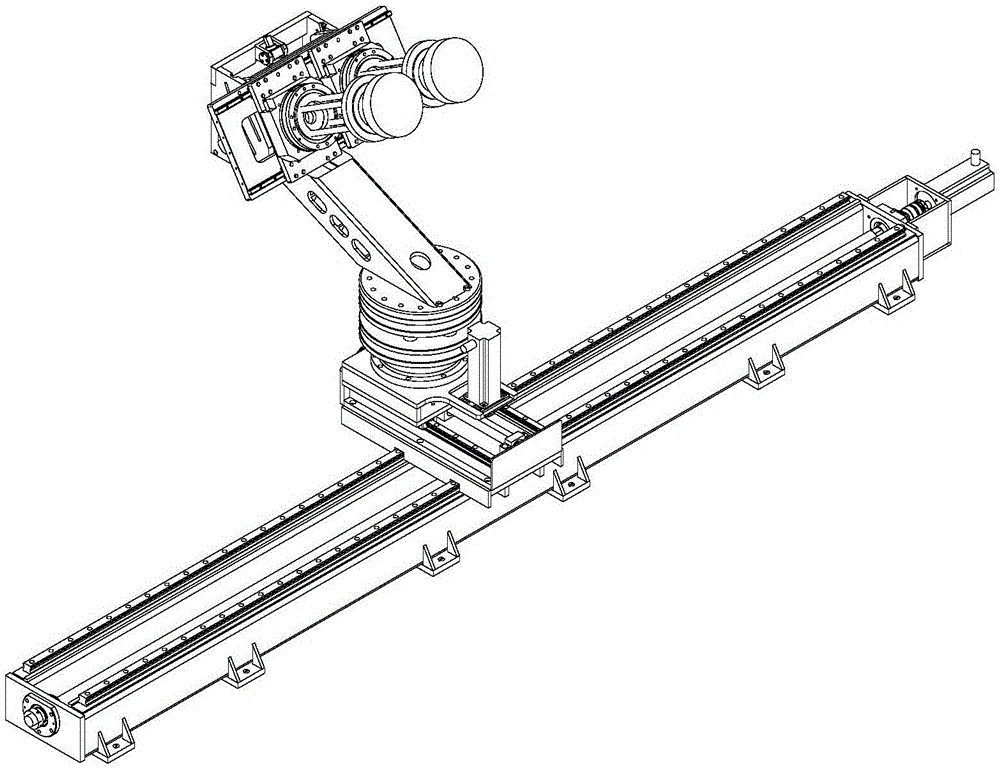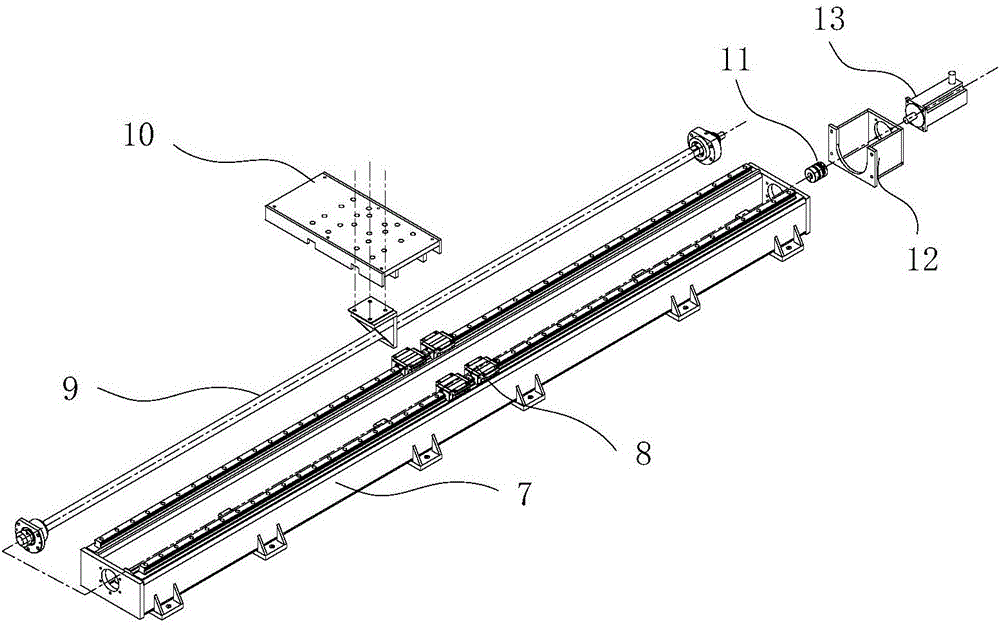Feed source locating and focus offset device for compact range measurement
A technology of compact field and feed source, which is applied in the direction of antenna grounding switch structure connection, electrical components, waveguide horn, etc., can solve the problems of single function, complicated adjustment process, difficult error, etc., and achieve increased accuracy, convenient operation, and high speed. fast effect
- Summary
- Abstract
- Description
- Claims
- Application Information
AI Technical Summary
Problems solved by technology
Method used
Image
Examples
Embodiment 1
[0039] Embodiment one: on-site installation and adjustment.
[0040] The phase center of the feed source will eventually be positioned at the focal point of the reflective surface, and the positioning deviation is required to be better than one-tenth of the wavelength (the wavelength of the maximum operating frequency of the compact field). During the on-site installation process, the X-direction base 7 is installed on the anchor bolts on the site, and the rough height adjustment of the feed source positioning device is mainly completed during installation. It is measured by using a laser tracker, and by adjusting the height of the nuts on the anchor bolts, Adjust the installation of the X-direction mobile unit 1 to a horizontal state. In order to ensure that the direction of the entire guide rail (X direction) is perpendicular to the direction of the electric axis of the compaction field (Y direction), it is necessary to use a laser tracker to adjust the linear guide rail in t...
Embodiment 2
[0041] Embodiment 2: Measuring the antenna in a non-defocused state.
[0042] Figures 10a, 10b, 10c and 10d are the isometric view, top view, front view and right view of the feed source positioning and the position and posture of the defocus device when measuring the antenna in the non-defocus state, respectively. In this test state, only one feed horn is needed. The horn is located on the electrical axis of the compact field, and its phase center is located on the axis of the electrical axis, which coincides with the focus of the reflective surface and faces the reflective panel. The beam deflection angle is 0° . The spherical wave emitted by the feed becomes a plane wave after passing through the reflector. During the antenna measurement process, the feed horn has two measurement states: measurement at a certain polarization angle and measurement at a constant speed. This test state can measure data such as the pattern of the antenna.
Embodiment 3
[0043] Embodiment 3: Measuring the antenna in a defocused state.
[0044] Figures 11a, 11b, 11c, and 11d are the isometric view, top view, front view and right view of the feed source positioning and the position and posture of the defocus device when measuring the antenna in the defocus state, respectively. In this test state, only one feed horn is needed. The position of the horn deviates from the electric axis of the compact field, its phase center is located on a specific defocus trajectory, and the beam deflection angle ranges from -9° to 9°. On the defocused trajectory, the spherical wave emitted by the feed source becomes an approximate plane wave with the best effect after passing through the reflecting surface. During the antenna measurement process, the feed horn has two measurement states: measurement at a certain polarization angle and measurement at a constant speed. This experiment can measure data such as the pattern of the antenna.
PUM
 Login to View More
Login to View More Abstract
Description
Claims
Application Information
 Login to View More
Login to View More - R&D
- Intellectual Property
- Life Sciences
- Materials
- Tech Scout
- Unparalleled Data Quality
- Higher Quality Content
- 60% Fewer Hallucinations
Browse by: Latest US Patents, China's latest patents, Technical Efficacy Thesaurus, Application Domain, Technology Topic, Popular Technical Reports.
© 2025 PatSnap. All rights reserved.Legal|Privacy policy|Modern Slavery Act Transparency Statement|Sitemap|About US| Contact US: help@patsnap.com



